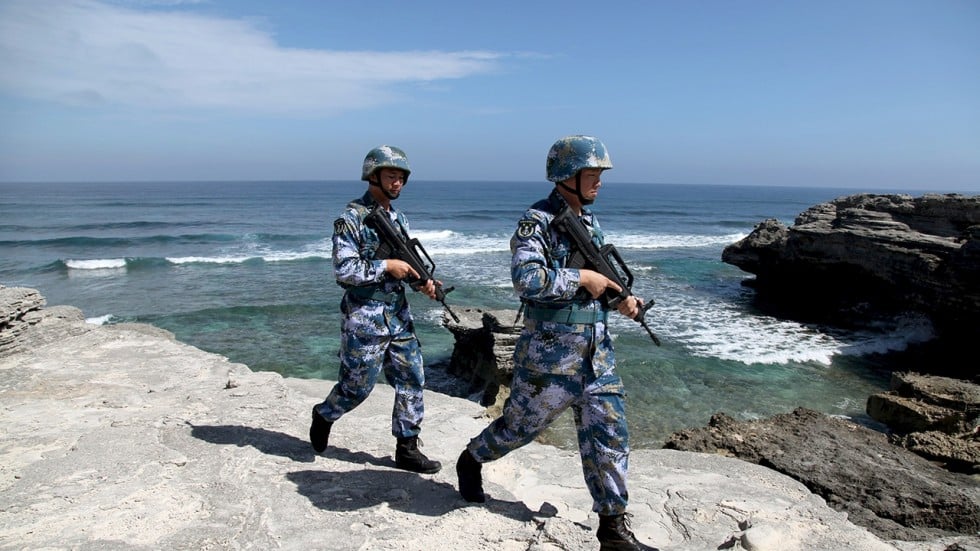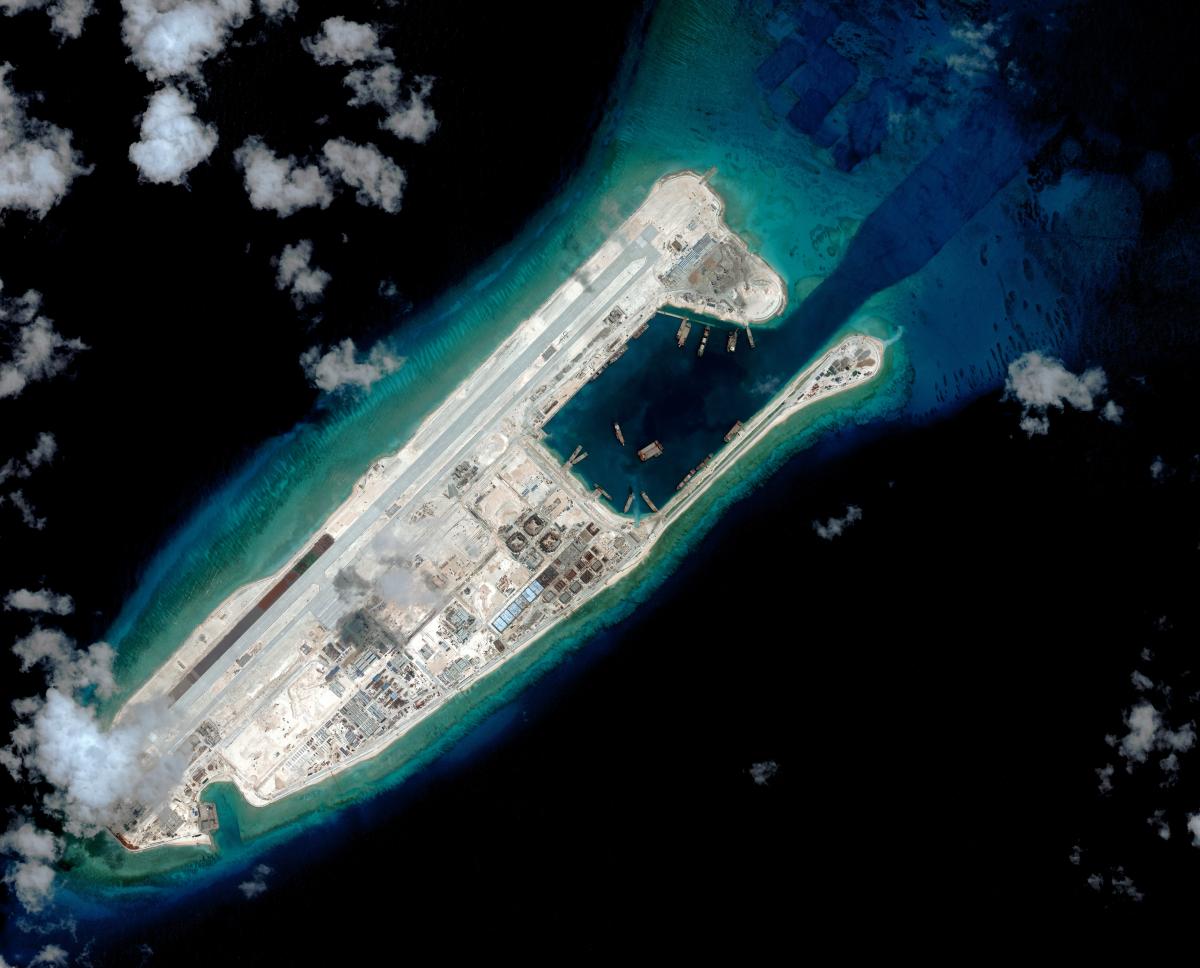
Chinese officials took a rhetorical hard line this week calling U.S. military actions in the South China Sea the “greatest threat” to stability in the region and vowed to increase its own military presence in the region, according to a Wednesday statement from the Chinese military.
“China will intensify sea and air patrol and enhance construction of defense capabilities in the area as needed, firmly safeguard national sovereignty and security and resolutely maintain peace and stability in the South China Sea,” read a Wednesday statement from the Ministry of National Defense.
The statement follows a Tuesday U.S. freedom of navigation operation in which a U.S. destroyer sailed within 12 nautical miles of a Chinese controlled installation in the Spratly Island chain.
USS William P. Lawrence (DDG-110) conducted an innocent passage past Fiery Cross Reef, a Chinese-controlled artificial island — also claimed by Taiwan, the Philippines and Vietnam, according to the Pentagon.

In immediate response to the transit, China launched two Shenyang J-11 fighters and a Shaanxi Y-8 AWACS, according to a Wednesday release from the Chinese Ministry of Defence. Additionally, a guided missile destroyer and two frigates tracked Lawrence during its transit past Fiery Cross reef.
The FON op prompted both the Ministries of Foreign Affairs and Defence to issue tough statements condemning the transit that also hinted at an expanded presence for the People’s Liberation Army in the region.
“We oppose such move by the US side and will continue to take necessary measures to protect China’s sovereignty and security,” Ministry of Foreign Affairs spokesman Lu Kang said late Tuesday.
“The U.S. places its own interests above international law. The U.S. has been waving the banner of navigation and overflight freedom and flexing its muscles in the South China Sea by ordering its military vessels and planes to sail or fly close to or even enter waters and air space near relevant islands and reefs of China’s Nansha Islands… To peace and stability as well as navigation and overflight freedom in the South China Sea, such provocative act is the greatest threat.”
A People’s Liberation Army spokesman called the transit, “a serious provocation.”
“We cannot help but ask how far the U.S. tries to go on the way of pushing forward militarization of the South China Sea and undermining the peace and stability in that region,” People’s Liberation Army spokesman Senior Col. Yang Yujun said in a Wednesday statement.
“The unauthorized illegal entry into Chinese waters near China’s Nansha (Spratly) islands by the U.S. warships and warplanes is a serious provocation.”
While China has long had a rotating military presence on its holdings in the Paracel Islands off of Vietnam the newer installations in the Spratlys – born from an accelerated land reclamation campaign over the last two years – don’t have a standing PLA presence.

However, Fiery Cross reef features a 10,000-foot runway capable of handling almost all of China’s military aircraft that could easily be based at the facility.
In January, China landed two commercial passenger aircraft on the landing strip.
Additionally, the installations on Fiery Cross, Subi Reef and Mischief Reef in the Spratlys can act as logistics hubs for PLA Navy and China Coast Guard ships – further extending their range without additional logistics ships.
U.S. officials have said during war the military utility of the installations in the Spratlys would be negligible but during peacetime the presence of Chinese forces could be a coercive influence to nearby neighbors.
China has presented its role in the region as one of stabilization not provocation.
“For a long time, the freedom of navigation and overflight in the region has been upheld thanks to the cooperative and concerted efforts by China and relevant coastal countries in the South China Sea,” Lu said.
“In fact, the freedom of navigation and overflight and the passage of vessels of all countries have never met any obstacle.”
However, sporadic reports from local press claim harassment from China Coast Guard cutters toward fishing vessels. In March, a Chinese cutter entered Indonesian territorial waters and rammed a Chinese fishing boat detained by Indonesian law enforcement. Other reports from Malaysia indicate Chinese cutters have escorted fishing ships into Malaysian territorial waters.
The following is a partial transcript of a May 10, 2016 press conference with Ministry of Foreign Affairs spokesman Lu Kang.
Q: The US today staged a freedom of navigation operation (FONOP)by sending a navy vessel to waters off China’s Yongshu Jiao. What is your comment?
A: On May 10, without permission from the Chinese government, the USS William P. Lawrence destroyer illegally entered waters near the relevant reef of China’s Nansha Islands. Relevant department on the Chinese side monitored, followed and issued warnings to the US vessel in accordance with law. I must say that what the US warship has done threatened China’s sovereignty and security interests, endangered safety of personnel and facilities on the reef, and jeopardized regional peace and stability. Again, we oppose such move by the US side and will continue to take necessary measures to protect China’s sovereignty and security.
I also want to add that China has indisputable sovereignty over the Nansha Islands and the adjacent waters. For a long time, the freedom of navigation and overflight in the region has been upheld thanks to the cooperative and concerted efforts by China and relevant coastal countries in the South China Sea. In fact, the freedom of navigation and overflight and the passage of vessels of all countries have never met any obstacle.
The US rushed to put forward the so-call FONOP before the signing of the United Nations Convention on the Law of the Sea (UNCLOS) in 1979. The US is challenging and provoking the new maritime order by wielding its military power. Many countries voiced their strong opposition to that from the very start. To this day, the US still drags its feet in joining UNCLOS. It is because the US places its own interests above international law. The US has been waving the banner of navigation and overflight freedom and flexing its muscles in the South China Sea by ordering its military vessels and planes to sail or fly close to or even enter waters and air space near relevant islands and reefs of China’s Nansha Islands. To peace and stability as well as navigation and overflight freedom in the South China Sea, such provocative act is the greatest threat.





